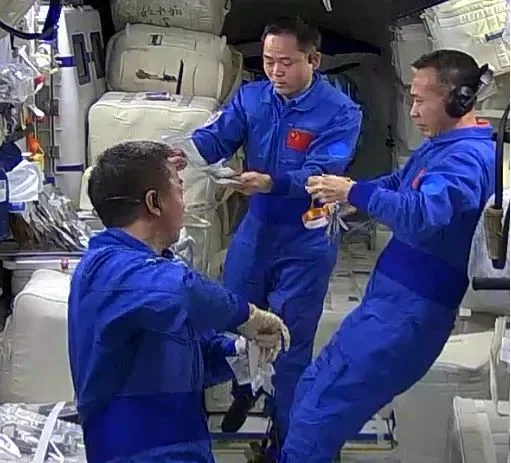
New Life Form Discovered on China’s Tiangong Space Station: Niallia tiangongensis
In a groundbreaking discovery, Chinese scientists have identified a novel microbial species aboard China's Space Station, officially named Niallia tiangongensis. This marks the first time a completely new species has been identified within the confines of the Tiangong space station, opening up exciting possibilities for scientific research and earthly applications.
The findings, published in the International Journal of Systematic and Evolutionary Microbiology, detail the isolation and characterization of this unique microbe, highlighting its exceptional ability to adapt to the harsh conditions of space. This discovery was made possible through the China Space Station Habitation Area Microbiome Program (CHAMP), a comprehensive initiative designed to monitor and understand the dynamics of microbes during long-term space missions.

In May 2023, the Shenzhou-15 astronaut crew meticulously collected microbial samples from cabin surfaces within the space station. These samples were then transported back to Earth for rigorous analysis, including morphological observation, genome sequencing, phylogenetic analysis, and metabolic profiling. These analyses definitively confirmed that Niallia tiangongensis is indeed a novel species.
So, what makes this space-borne microbe so special? Researchers found that Niallia tiangongensis possesses exceptional stress resistance due to its ability to regulate the biosynthesis of bacillithiol to combat oxidative stress. This helps the microbe maintain cellular redox balance, allowing it to thrive under extreme conditions. Furthermore, it exhibits unique characteristics in biofilm formation and radiation damage repair, crucial for its survival in the space environment.

According to the report, decoding survival strategy of Tiangong's bacteria offers groundbreaking insights for researchers. Its mechanisms for adapting to space conditions can aid in the design of targeted microbial control strategies, providing precise intervention ideas for fields such as aerospace, agriculture, industry and medicine. Additionally, its ability to utilize certain organic compounds offers new possibilities for the sustainable use of these substances.
The discovery of Niallia tiangongensis not only expands our knowledge of microbial life but also holds immense potential for practical applications on Earth. Its survival mechanisms could pave the way for innovative solutions in various sectors, from aerospace engineering to medicine. The microbe's ability to break down organic compounds suggests new, sustainable methods for converting waste into useful resources, both in orbit and on our planet.
As the Tiangong space station continues its long-term operations, scientists anticipate a "bumper harvest" of novel genetic and metabolic discoveries. These insights gained in the unique environment of space promise to yield significant results, bringing new opportunities for scientific research and diverse applications back on Earth. What other secrets does the Tiangong space station hold, and how will these discoveries reshape our understanding of life and technology?
What do you think about this amazing new discovery? Share your thoughts and theories in the comments below!